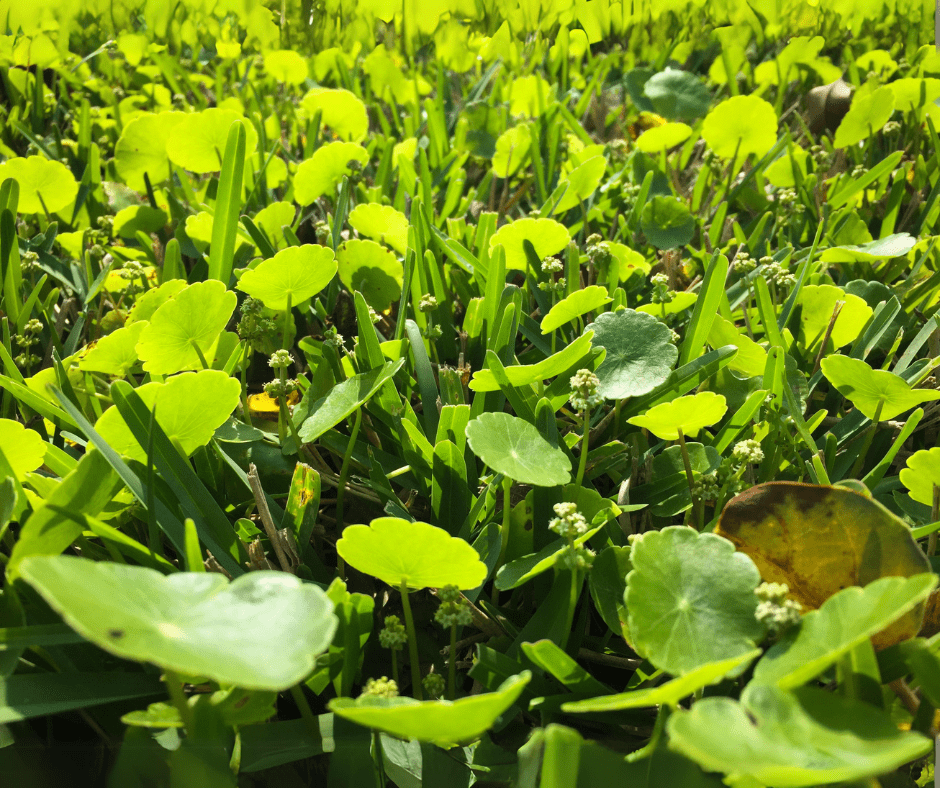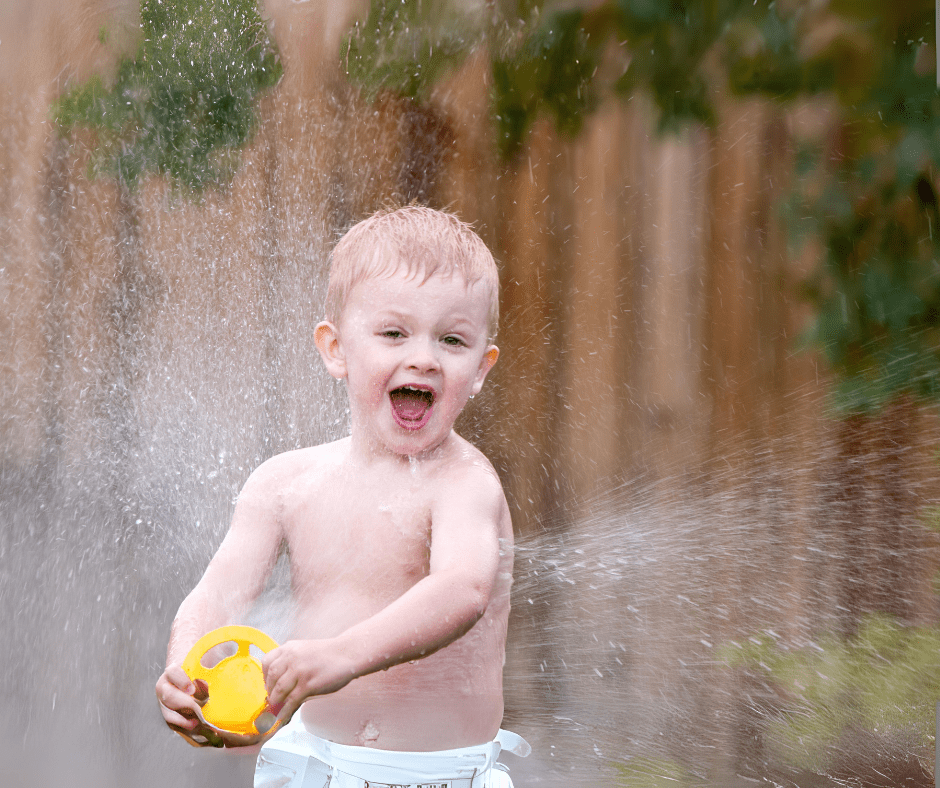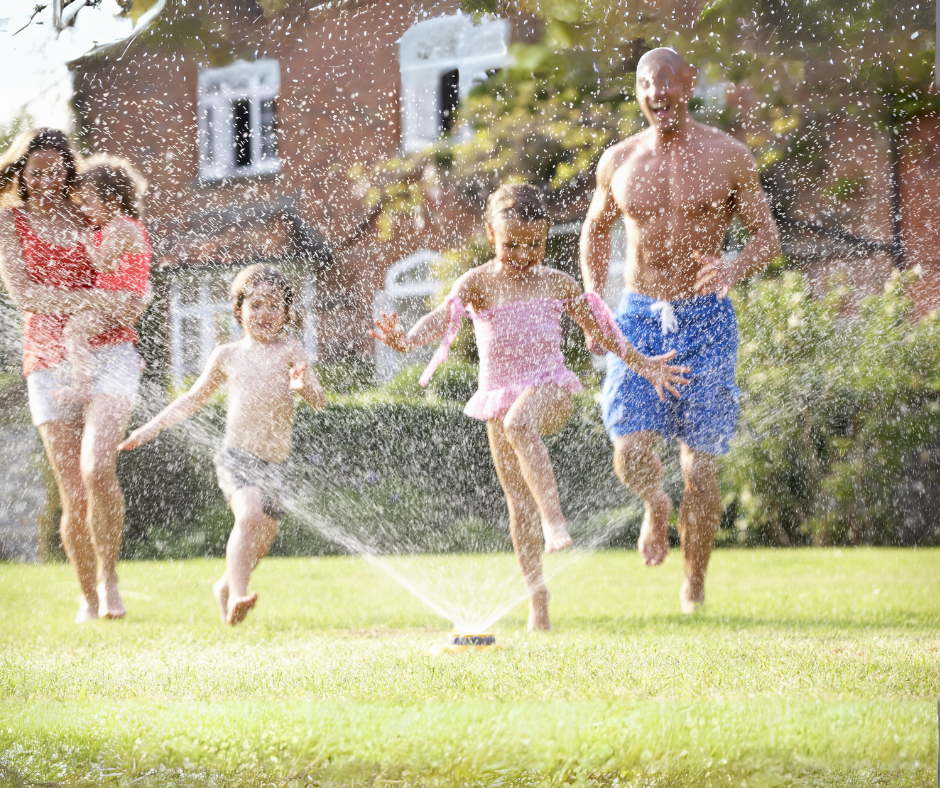Lawn Overwatering: Unlock Sustainability & Make Your Lawn Thrive!
Table of Contents
- 1 Lawn Overwatering
- 2 Frequently Asked Questions; Rain Sensors & Why Overwatering Is Bad
- 2.1 Why do I need a rain sensor if we get a lot of rain in Brevard and Indian River County?
- 2.2 Isn’t a lush lawn dependent on constant watering?
- 2.3 What are the benefits of a deeper root system for my lawn?
- 2.4 How can a rain sensor help with weeds?
- 2.5 How does overwatering hurt the Indian River Lagoon?
- 2.6 What are some signs my lawn is being overwatered?
- 2.7 Besides rain sensors, what else can I do to have a healthy lawn?
- 2.8 How is overwatering my lawn detrimental to my lawn’s health similar to a person constantly over-consuming sugary drinks?
- 2.9 I already have an irrigation system. Can I add a rain sensor to it?
- 2.10 How much does a rain sensor cost?
- 2.11 Isn’t using a rain sensor bad for my lawn in the summer when it doesn’t rain much?
- 2.12 how can a rain sensor help to avoid root rot in the winter?
- 2.13 how can a mycorrhizal treatment help to use less water and reduce pollution to the Indian River Lagoon?
- 2.14 How do you fix overwatered grass?
- 2.15 Should I water my lawn every day?
- 2.16 What are the basic causes for fungal issues on my St. Augusting & Zoysia Lawn?
Lawn Overwatering
Florida’s Space and Treasure Coasts boast beautiful weather year-round, making it a haven for lush lawns. But keeping your St. Augustine grass vibrant and healthy goes beyond sunshine and sprinklers. In fact, traditional irrigation systems, without the help of rain sensors, can often hinder rather than help.
This post from Pest & Lawn Organic Guard, the only company offering Mycorrhizal Treatment lawn services on the Space and Treasure Coast, dives into why rain sensors are crucial for a healthy lawn and a healthy environment.

Why is Your Irrigation System “Supplemental”?
Most homeowners understand that regular watering is essential for a healthy lawn. However, the key word here is “supplemental.” Brevard and Indian River Counties receive an average of 50-60 inches of rain annually.
While this rainfall might not be evenly distributed throughout the year, it significantly contributes to your lawn’s hydration needs. An irrigation system should act as a top-up during dry periods, not a primary source of water.
The Downside of Overwatering: Why Rain Sensors Matter
Traditional irrigation systems often operate on pre-programmed schedules, regardless of recent rainfall. This can lead to a common misconception: a lush lawn requires constant watering. Unfortunately, the reality is quite the opposite.
Overwatering your St. Augustine grass can have a number of detrimental effects:
- Shallow Root Systems: Constantly saturated soil prevents roots from growing deep and searching for moisture, leading to a shallow, weak root system. This fragile foundation makes your lawn more susceptible to drought, pests, and diseases.
- Nutrient Loss: Excessive watering washes away essential nutrients from the soil, hindering your grass’s ability to thrive. This can lead to the need for more frequent fertilization, impacting your wallet and the environment.
- Fungal Diseases: Overly moist conditions create a breeding ground for fungal diseases like brown patch and chinch bugs, requiring harsh chemical treatments.
- Weed Invasion: Overwatered lawns are a haven for weeds that thrive in moist environments. Common culprits include: Dollarweed, Sedge grass, and Crabgrass.
These persistent weeds not only detract from your lawn’s appearance but can also outcompete your St. Augustine grass for vital resources.

Rain Sensors: Watering Smarter, Not Harder
A rain sensor acts as the missing link between your irrigation system and Mother Nature. By automatically pausing your sprinklers during and after rainfall, it ensures your lawn receives only the supplemental water it needs.
Here’s how rain sensors benefit you and your lawn:
- Reduced Water Waste: Sensors prevent unnecessary watering, saving you money on your water bill and conserving this precious resource.
- Deeper Roots, Stronger Lawns: By allowing periods of slight drought stress, rain sensors encourage St. Augustine grass to develop deeper root systems in search of moisture. These deeper roots make your lawn more resilient to future droughts, pests, and diseases.
- Healthier Lawns with Less Weed Control: A healthy lawn with a robust root system is naturally more resistant to weed invasion. With a rain sensor and proper watering practices, Pest & Lawn Organic Guard technicians often find they only need to spot-spray 3-5 weeds compared to treating the entire lawn with a less-targeted weed and feed application. This not only saves you money but also reduces the amount of chemicals used on your lawn, creating a more eco-friendly environment.
The Environmental Impact of Overwatering: Protecting the Indian River Lagoon
Our beautiful Indian River Lagoon is a vital ecosystem. Unfortunately, overwatering lawns can contribute to its decline:
- Nutrient Runoff: Excess water washes away fertilizers and pesticides, carrying them into storm drains and ultimately polluting the lagoon. This disrupts the delicate balance of the lagoon’s ecosystem and can lead to harmful algal blooms.
- Soil Erosion: Saturated soil is more susceptible to erosion, washing away valuable topsoil and further impacting the lagoon’s health.
Unleash Your Lawn’s Potential with Pest & Lawn Organic Guard
At Pest & Lawn Organic Guard, we believe in creating healthy lawns that are not only beautiful but also environmentally responsible. Our Mycorrhizal Treatment service promotes deeper root growth and nutrient uptake, further reducing the need for excessive watering.
Contact us today to learn more about our Mycorrhizal Treatments, and organic lawn care solutions. Together, we can create a thriving lawn that’s good for you, good for your wallet, and good for the Indian River Lagoon!

Frequently Asked Questions; Rain Sensors & Why Overwatering Is Bad
Why do I need a rain sensor if we get a lot of rain in Brevard and Indian River County?
Even though our area receives an average of 50-60 inches of rain annually, it doesn’t always fall consistently. Rain sensors ensure your lawn gets the right amount of water, not too much and not too little. This helps your lawn develop a deeper root system, reducing reliance on irrigation during drier periods.
Isn’t a lush lawn dependent on constant watering?
No, overwatering can actually harm your St. Augustine grass. Constant moisture weakens the root system, making it more susceptible to drought, pests, and diseases. Rain sensors prevent overwatering and encourage your lawn to develop deeper roots in search of moisture during dry spells.
What are the benefits of a deeper root system for my lawn?
Deeper roots make your lawn more resilient to drought stress, pests, and diseases. They also allow your grass to access nutrients and moisture stored deeper in the soil.
How can a rain sensor help with weeds?
Healthy lawns with robust root systems are naturally more resistant to weed invasion. By promoting deeper roots and preventing overwatering, rain sensors can help reduce weed problems.
This often allows us to use spot-spraying for weeds instead of treating the entire lawn with less-targeted weed and feed applications.
How does overwatering hurt the Indian River Lagoon?
Overwatering washes away excess nutrients and fertilizers from your lawn. This runoff can pollute the lagoon, disrupting its delicate ecosystem and contributing to harmful algal blooms.
What are some signs my lawn is being overwatered?
-Shallow root growth
-Patches of brown or yellow grass
-Increased presence of weeds like dollarweed, sedgegrass, and crabgrass
-Fungal diseases
Besides rain sensors, what else can I do to have a healthy lawn?
Consider a Mycorrhizal Treatment, which promotes deeper root growth and nutrient uptake.
Mow your lawn at the recommended height for St. Augustine or Zoysia grass.
How is overwatering my lawn detrimental to my lawn’s health similar to a person constantly over-consuming sugary drinks?
Both have similar health effects.
Both create dependence: Just like sugary drinks provide a quick burst of energy, excessive watering gives your lawn a temporary boost. However, over time, both habits make it harder for the body (or lawn) to function properly. The constant sugar intake disrupts your body’s natural ability to regulate blood sugar, and the overwatering weakens the lawn’s root system, making it reliant on external water sources.
They hinder long-term health: A diet high in sugar can lead to health problems like obesity and diabetes. Similarly, overwatering weakens the root system, making the lawn more susceptible to pests, diseases, and drought stress.
Just like a healthy human body needs a balanced diet and proper hydration, a healthy lawn needs the right amount of water to thrive. With proper watering practices and techniques like using a rain sensor, you can help your St. Augustine or Zoysia grass lawn develop a strong root system and natural resilience, just like a healthy body that functions at its best.
I already have an irrigation system. Can I add a rain sensor to it?
In most cases, yes! Many irrigation systems can be retrofitted with rain sensors.
How much does a rain sensor cost?
Under $35.00 for a basic rain sensor.
Isn’t using a rain sensor bad for my lawn in the summer when it doesn’t rain much?
Not at all! Rain sensors are designed to work with your irrigation system to provide the right amount of water, even during dry periods. The sensor will allow the system to water your lawn when needed, promoting deeper root growth that helps your lawn access moisture stored in the soil during drier times.
how can a rain sensor help to avoid root rot in the winter?
While rain sensors are fantastic for summer water conservation, they also play a crucial role in preventing root rot during winter. Florida’s winters are mild, but overwatering during this time can be detrimental. Saturated soil creates the perfect environment for fungal diseases like root rot to thrive. A rain sensor prevents overwatering by automatically pausing irrigation during and after winter rains, allowing the soil to drain properly. This helps keep the root system healthy and reduces the risk of root rot, ensuring your St. Augustine & Zoysia grass emerges vibrant and green come spring.
how can a mycorrhizal treatment help to use less water and reduce pollution to the Indian River Lagoon?
A Mycorrhizal Treatment can help reduce water usage and pollution in the Indian River Lagoon in a few key ways:
Improved Water Efficiency: Mycorrhizae are beneficial fungi that form a symbiotic relationship with plant roots. These fungi act like tiny extensions of the root system, helping plants absorb water and nutrients more efficiently. This improved efficiency means your St. Augustine grass needs less water overall to thrive.
Reduced Nutrient Runoff: Overwatering and excessive fertilization can lead to nutrient runoff from lawns. This runoff carries pollutants like nitrogen and phosphorus into storm drains, ultimately ending up in the Indian River Lagoon.
By requiring less water, Mycorrhizal Treatment helps prevent overwatering and nutrient leaching. Additionally, mycorrhizae can help plants utilize existing nutrients in the soil more effectively, further reducing the need for fertilizers and minimizing potential runoff.
Stronger Root Systems: Mycorrhizae promote deeper root growth in your lawn. These deeper roots allow your grass to access moisture stored deeper in the soil, making it more resilient during dry periods and less reliant on frequent watering. This reduces the overall amount of water needed to maintain a healthy lawn.
Improved Soil Health: Mycorrhizal fungi contribute to healthier soil by breaking down organic matter and increasing its water holding capacity. This healthier soil drains better and retains moisture more effectively, reducing the need for frequent watering and minimizing the risk of runoff.
In summary, Mycorrhizal Treatment promotes a more natural and sustainable approach to lawn care. By improving water efficiency, reducing nutrient runoff, and strengthening the root system, Mycorrhizal Treatment helps conserve water and protects the delicate ecosystem of the Indian River Lagoon.
How do you fix overwatered grass?
Halt the H2O: Stop watering your lawn completely. Allow the soil to dry out thoroughly between waterings.
Encourage Deeper Roots: Once the lawn dries, adjust your watering habits. Water deeply and infrequently, allowing the water to penetrate several inches into the soil.
This encourages roots to grow deeper in search of moisture, making your lawn more resilient in the long run.
Should I water my lawn every day?
You should not water your lawn every day. Here’s why:
Overwatering Risks: Daily watering can lead to several problems for your St. Augustine grass in Florida, including: Shallow Root Systems: Constant moisture discourages roots from growing deep, making the lawn susceptible to drought, pests, and diseases.
Nutrient Loss: Excess water washes away essential nutrients from the soil, hindering your grass’s ability to thrive and potentially requiring more frequent fertilization.
Fungal Diseases: Overly moist conditions create a breeding ground for fungal diseases.
Weed Invasion: Overwatered lawns attract weeds that thrive in damp environments.
Supplemental Watering: Brevard and Indian River Counties receive an average of 50-60 inches of rain annually. While rainfall might not be evenly distributed, it significantly contributes to your lawn’s hydration needs. An irrigation system should act as a top-up during dry periods, not a primary water source.
How Often Should I Water?
The best approach is to water deeply and infrequently, allowing the water to penetrate several inches into the soil. This encourages roots to grow deeper for better access to moisture. Here are some tips:
Observe Your Lawn: Look for signs of thirst like wilting or dry soil before watering.
Feel the Soil: Stick your finger a few inches into the soil. If it feels dry, it’s time to water.
Consider a Rain Sensor: These devices automatically pause your irrigation system during and after rainfall, preventing overwatering.
By adopting smarter watering practices, you can promote a healthier lawn, reduce water waste, and minimize any negative environmental impact on the Indian River Lagoon.
What are the basic causes for fungal issues on my St. Augusting & Zoysia Lawn?
Fungal and shallow root issues are caused by:
-Rainfall
-Excessive Irrigation
-High Himidity
https://pubmed.ncbi.nlm.nih.gov/35807693/


